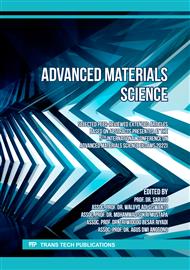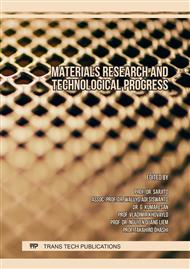p.17
p.25
p.33
p.41
p.49
p.55
p.63
p.73
p.83
Aluminum Oyster Mushroom Frying Surface Quality Improvement through Anodizing
Abstract:
Aluminum is the most often used metal in modern industry and has a long history of use. This material has several advantages and downsides. Among the drawbacks are some aluminum alloys that cannot survive the corrosion rate produced by the environment. To address these problems, numerous procedures are used, one of which being anodizing. The goal of this procedure is to oxidize the metal surface, forming a coating of aluminum oxide that will protect it from the damaging impacts of the environment. As a result, the coating method is used. Stearic acid and lauric acid were employed in the coating procedure in this investigation. Stearic acid and lauric acid were employed in the coating procedure in this investigation. By performing the anodizing process first, then the coating process, the hydrophobicity properties of the many variations employed may be determined by examining the contact angle generated by the droplet outcomes. Untreated sample with a contact angle of 65° were found to have hydrophilic qualities, while the anodizing treatment had a contact angle close to 0°, and the anodizing process with stearic acid and lauric acid coating had contact angles of 117° and 130°, respectively. A sliding angle was also achieved for each treatment applied to the test sample, with the anodizing process obtaining a sliding angle of 59°, the anodizing process with stearic acid coating obtaining a sliding angle of 38°, and the coating with lauric acid obtaining a sliding angle of 28°. The coating utilizing stearic acid and lauric acid has strong hydrophobicity due to its superhydrophobic nature, which may resist the entry of water on the aluminum basis, according to the various treatments performed.
Info:
Periodical:
Pages:
49-54
Citation:
Online since:
November 2022
Price:
Сopyright:
© 2022 Trans Tech Publications Ltd. All Rights Reserved
Share:
Citation:



